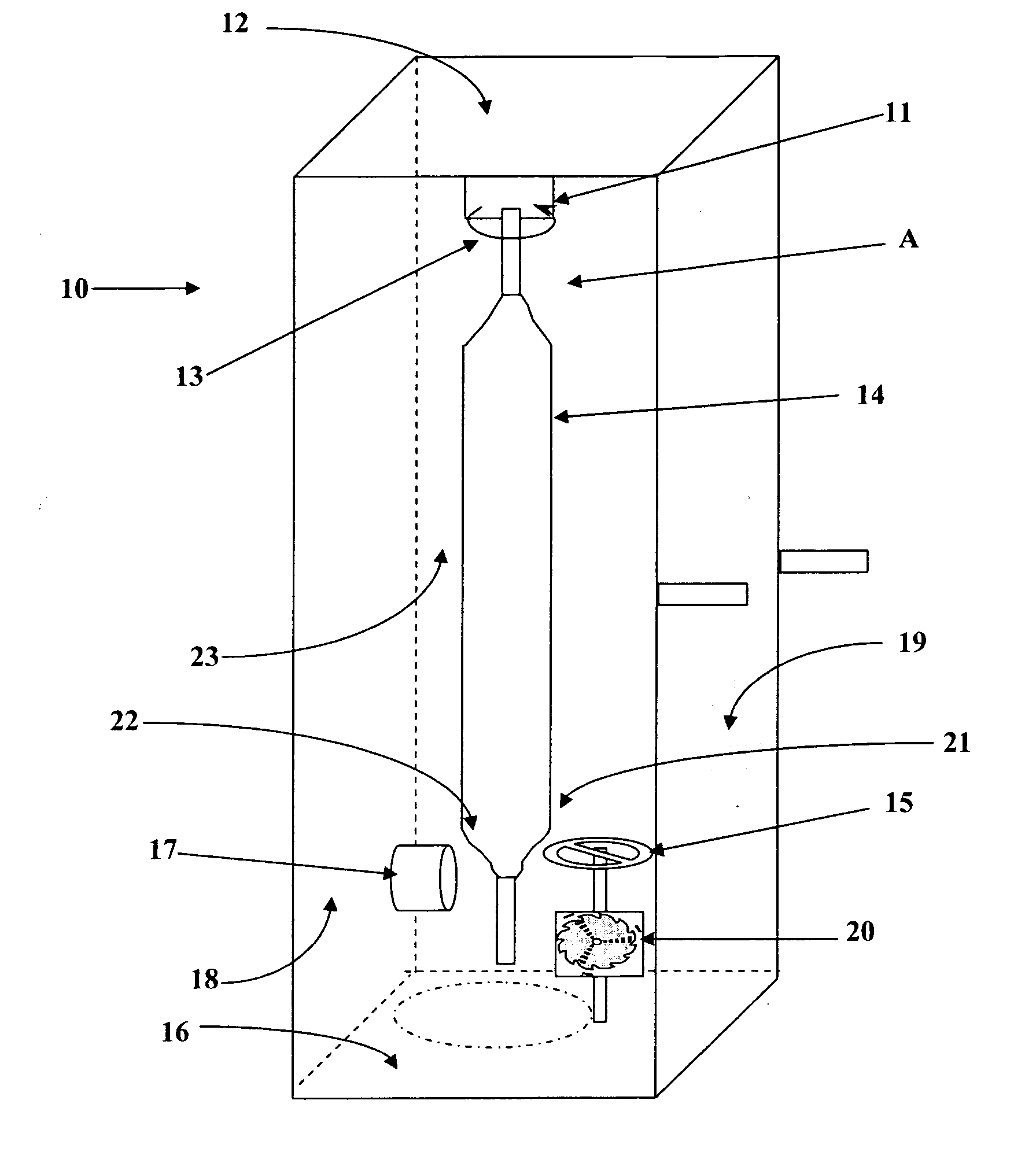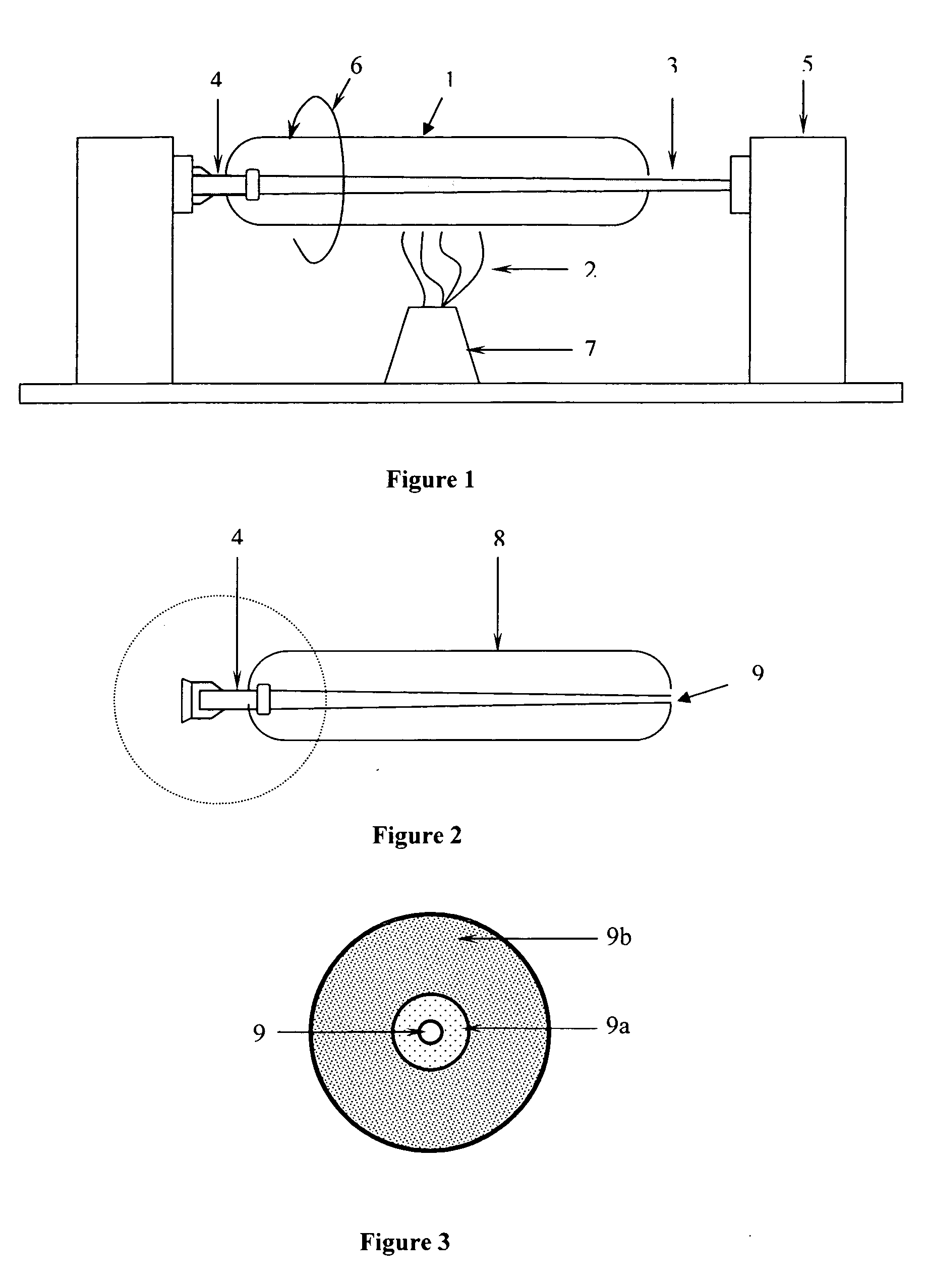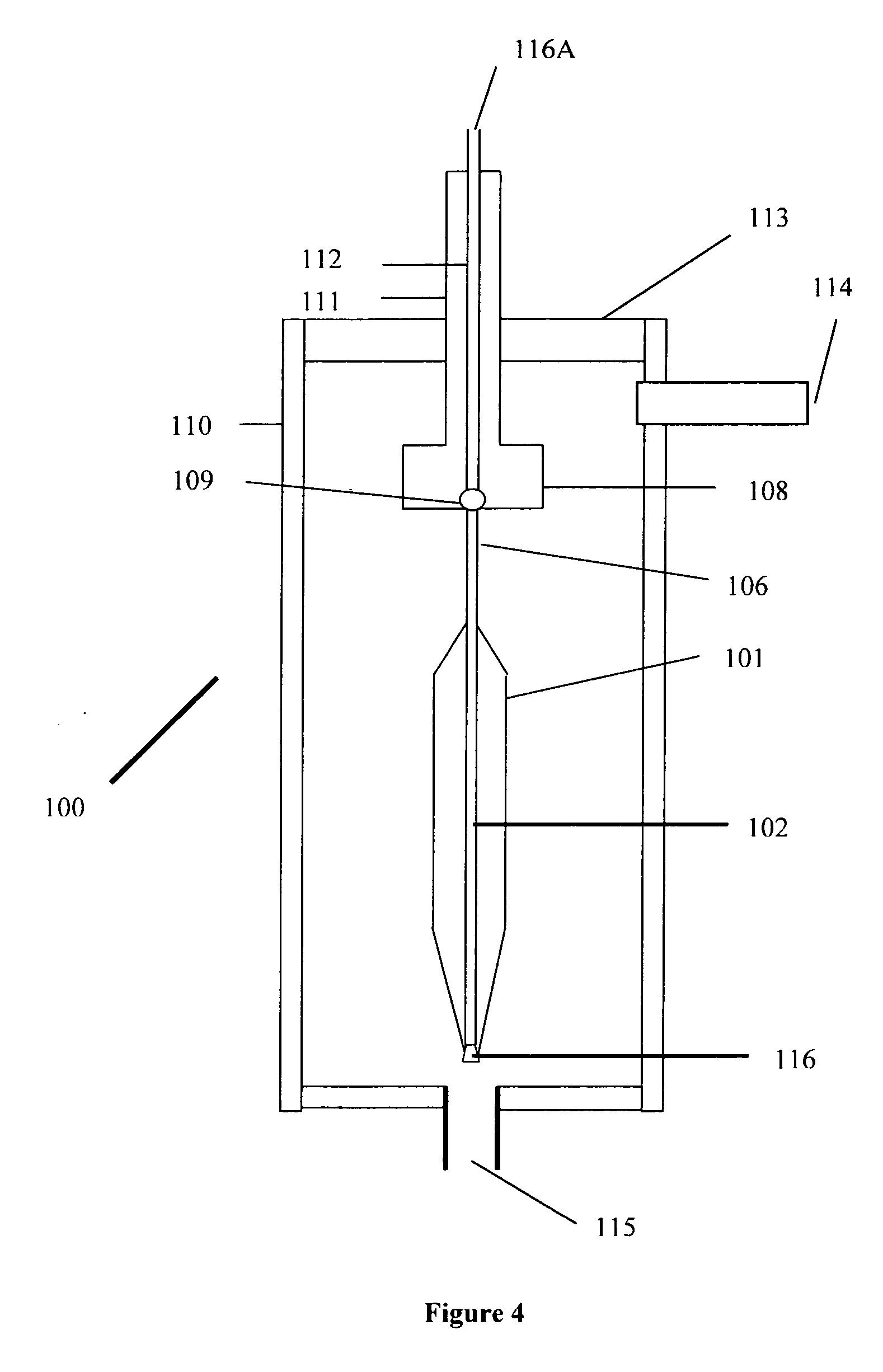However, the IPA1073 method does not address the problems encountered during the process step of cone preparation just before the step of fiber draw.
Accordingly, in accordance with methods as known in the prior art, the fiber draw step is performed while heating the preform end to a very high temperature of about 2000° C. However, desired shape of cone formation in drawing stage before the fiber draw step consumes more than one hour for each preform, which will reduce the productivity of optical fiber.
The main problem of preparation of cone having desired shape which is suitable for start of fiber draw step at one of the opposite ends of the preform by heating the respective opposite end is that the preform bottom end needs to be loaded in a specially built furnace to heat the preform to a very high temperature of the order of about 2000° C. Further, if the cone is prepared at one of the preform ends by step of heating and such preform is required to be stored before drawing the fiber, then the preform is required to be cooled to a temperature suitable for
safe handling and storage, which can only be achieved by loading the preform from the step of heating in a specially built containers or vessels comprising proper cooling systems for the step of cooling.
Therefore, the known methods of preparing the cone of desired shape by heating not only suffer from the drawbacks of requiring a step of heating the preform in a specially built furnace to a very high temperature of the order of about 2000° C. and requiring specially built containers or vessels comprising proper cooling systems for loading of preform for the step of cooling, that is also suffer from the problem of requiring additional process step of cooling the preform after preparation of cone of desired shape if the preform has to be stored for fiber draw at a later stage.
Further, it has been observed that the cooling of the preform has to be performed very carefully in a highly controlled manner, because non-uniform cooling or immediate cooling or abrupt cooling has been shown to cause physical defects and stress formation in the preform cone.
Therefore, the known processes for preparation of cone of desired shape just before the fiber draw step are not only highly
time consuming and power or energy consuming, but are also highly complicated and uneconomical for commercial applications, because of requirement of specially built furnaces with specially designed heating means for example burners of hydroxyl
flame, heating by
graphite resistance or
induction furnace, or by
plasma heating means, power full heating means of
laser, like
carbon dioxide laser etc. for heating the preform end and requirement of specially designed containers or vessels comprising proper cooling systems for loading of preform to have cooling in highly controlled manner.
The hydroxyl
flame which is commonly used for cone preparation has been observed to result in increase of hydroxyl contents of the preform, which in-turn has been observed to result in increased
transmission loss, particularly at about 1380 nm
wavelength band meaning thereby the preform is not suitable for CDWM (16 Channels) applications.
Further, the use of commonly used hydroxyl
flame also results in wastage of the glass during the cone cutting process.
The heating by
graphite resistance or
induction furnace has been observed to cause
graphite oxidation which results in formation of oxidation products, for example ash, graphite particles etc. which adheres to the preform surface, and such
contamination of the preform with unwanted particles results in production of a preform which will produce a fiber having
transmission loss and poor strength.
Further drawback of the preform cone preparation by heating step is that the preform has to be placed inside the furnace, the gap between the furnace and preform needs to be sealed properly, otherwise the graphite heating material will get oxidized thus particles will adhere to the outer surface of preform and / or cone.
The lasers, such as
carbon dioxide lasers, which are clean heat source to operate, also suffer from the drawback of consuming high power to generate required high temperature meaning thereby there is increase in overall production cost.
Further, with use of lasers, one cannot produce preform cones of higher diameter.
Further, it has also been observed that large amount of thermal
induced stress in the preform cone area may shatter the preform to pieces.
It has been further observed that whatever, one may do to have controlled heating and controlled cooling, even then by the known methods of preparation of the preform cone by step of heating followed by step of cooling, one cannot have precisely controlled cone of desired shape and dimensions which can be suitable for start of fiber draw without wastage of preform meaning thereby one cannot have preform cone of predetermined shape and dimensions including desired diameter.
 Login to View More
Login to View More 


